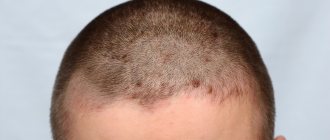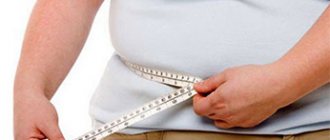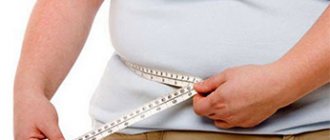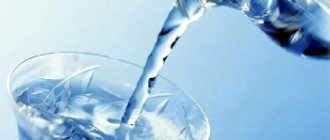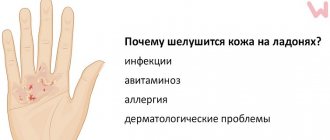| Appointment with a dermatologist at the clinic. Call a dermatologist at home. | Reception is strictly by appointment, make an appointment by phone: +7 | Prices for services | Reviews about the clinic |
Skin is the largest organ in humans. She is sensitive to all pathological changes. Itchy skin always indicates unfavorable processes in the body. Therefore, you need to see a doctor.
In our clinic, consultations are conducted by medical specialists with extensive experience. A timely, accurate diagnosis will allow you to get rid of an unpleasant symptom and prevent the development of a serious disease with serious consequences.
Make an appointment with a dermatologist by phone or by filling out the online form
| Select a clinic | Skin rash | Dermatologist | Dermatologist at home |
Answers to frequently asked questions about itchy skin:
- Which doctor treats itchy skin?
- What organs are affected by skin itching?
- Why is itchy skin dangerous?
- What tests should be taken for itchy skin?
- What diet is needed for itchy skin?
- What diseases does itchy skin indicate?
- Itchy skin for no apparent reason?
- What parasites cause itchy skin?
- What microorganisms cause itchy skin?
- How to get rid of itchy skin?
- Should a patient with itchy skin be isolated?
- Skin itching due to gastrointestinal diseases?
- What are the main causes of itchy skin?
- How to distinguish allergic itching from parasitic itching?
- How to prepare for an appointment with a dermatologist?
- How to get checked for skin diseases?
- What diseases does a dermatologist treat?
- What tests should be taken by a dermatologist?
- What diagnostics can a dermatologist perform in the clinic?
- Where to go with a skin disease?
Senile itch
Age-related changes affect all human organs, including the skin.
In older people, the skin becomes thinner, dries out, and becomes sensitive to allergens and mechanical irritants. These factors, as well as various diseases of internal organs and systems, cause the so-called senile itch - an unpleasant sensation that can be constant or occur periodically. Senile, or senile, itching can cover the entire body or only certain areas. The pathological condition is accompanied by peeling of the skin. Most often, unpleasant sensations occur in the evening and at night.
Allergic reactions and other reasons
Itching in women in the perineal area can be observed under the influence of various external and internal factors. In particular, with uncomfortable, tight, synthetic, rough, low-quality underwear, a greenhouse effect is created, sweating increases and, as a result, skin maceration occurs. External irritants can include various aggressive chemicals, chemical additives, fragrances in deodorants, soaps, shower gels, pads, toilet paper, tampons, pads, clothing dyes, and washing powders. A woman's skin and vaginal mucosa can react to vaginal contraceptive pills, creams, suppositories, as well as latex and spermicide condoms. A rare but extremely unpleasant allergic reaction may be a reaction to the sperm of a sexual partner. An allergy to sperm, as well as incompatibility between the microflora of husband and wife, can be a serious problem for a married couple, as it causes discomfort in the woman.
Causes of senile itching
The main reason for the condition is natural aging of the body. As a person ages, the synthesis of hormones “responsible” for the elasticity of the skin decreases. Metabolism slows down, resulting in slower tissue regeneration. The skin becomes dry and wrinkled.
Several contributing factors increase the likelihood of aging itch. These include:
- gastrointestinal diseases;
- diabetes;
- renal failure;
- liver diseases;
- atherosclerosis;
- atrophy of the skin glands;
- cognitive disorders;
- violations of water-salt metabolism;
- dehydration.
Often, an unpleasant sensation can appear due to changes in air temperature, wearing synthetic clothing, swimming in too hard water or using products with an inappropriate pH level.
Skin itching in the practice of a general practitioner
Itching is a subjective sensation that causes a reflex of scratching or throwing off an irritant, characteristic of the skin and, less often, mucous membranes. A distinction is made between physiological itching (normal, occurring in response to adequate irritations, for example, insect bites) and pathological itching, which also develops in response to the action of pruritogens, but under conditions of altered reactivity of the nervous system.
Acute attacks of pathological itching are often associated with hypersensitivity to food or drug allergens. Chronic pathological itching can be caused by autointoxication that occurs due to diseases of the liver, gastrointestinal tract, metabolism, etc. Itching can act as a symptom of a number of dermatoses (Dühring's disease, urticaria, atopic dermatitis, scabies, etc.), but it can also be a monosymptom. Often itching is one of the early symptoms of diseases of the hematopoietic organs, malignant neoplasms, endocrine, nervous and mental diseases [2, 4, 6].
Itching is classified according to the degree of prevalence - localized (limited to certain areas of the skin) and diffuse (generalized), according to intensity (assessed by the consequences of skin trauma during scratching) - biopsy and non-biopsy (itch-paresthesia and migratory itching). As a result of scratching, the skin may show excoriations (linear crusts), bloody crusts, pigmentation, and lichenification. As a result of scratching, pyodermatitis (impetigo, folliculitis, boils) can develop secondarily.
Generalized itching is a common and significant problem in terms of differential diagnosis. Since it can be based on such trivial factors as dry skin, and such serious ones as hidden lymphoma or endocrine disorders, the analysis of the condition of a patient complaining of itching requires clinical thinking at the same level as the knowledge and skills of studying skin manifestations . In most cases, itching does not have any special signs that make it possible to diagnose a specific general disease, such as obstructive jaundice, hyperthyroidism or lymphoma. To establish a diagnosis, the clinician must use data from anamnesis, clinical and laboratory tests [1-3].
Pathogenesis. With itching and pain, the neuroanatomical pathways of excitation are common, but the sensory signs are different. Free nerve endings, which play the role of receptors for itching, are located in the papillary layer of the dermis, next to the dermoepidermal border, and are not specific. A number of soluble mediators belong to the peripheral and central mechanisms of itching. Histamine, trypsin, proteases, and bile salts when administered intravenously cause itching. Prostaglandin E removes the threshold for the appearance of itching under the influence of both histamine and papain. In inflamed skin, the content of prostaglandins increases and, thus, they can determine the intensity of itching in inflammatory dermatoses. Opiate peptides and receptors of the central nervous system are involved in the perception of itching [4, 5].
Clinic. Itchy skin can be a manifestation of a large number of diseases. In patients suffering from itching, against the background of obvious skin changes in the form of, for example, vesicles and papules, a primary dermatological disease is usually detected. For diagnosis, it is often necessary to use special methods in dermatology, especially skin biopsy.
Patients with itching but no obvious skin rash, with or without signs of constant scratching (excoriation) and rubbing (lichenification, polished nails) present a diagnostic challenge. First of all, an attempt should be made to identify primary lesions and some evidence of primary skin disease [1, 4].
Conditions in which generalized itching may not be accompanied by skin lesions:
- metabolic and endocrine disorders (hyperthyroidism, diabetes mellitus, carcinoid syndrome);
- malignant neoplasms (lymphoma and leukemia, abdominal cancer, central nervous system tumors, multiple myeloma, mycosis fungoides);
- drug treatment (opium derivatives, subclinical sensitivity to drugs);
- invasions (pediculosis, scabies, nematodes, onchocerciasis, ascariasis, trichinosis, some zoonoses);
- kidney disease (chronic renal failure);
- blood diseases (erythremia, paraproteinemia, iron deficiency anemia);
- liver disease (intrahepatic or extrahepatic cholestasis, pregnancy [intrahepatic cholestasis that resolves after childbirth]);
- psychogenic states (transient periods of emotional stress), persistent (mania of parasitosis), psychogenic itching, neurotic excoriations);
- various conditions (dry skin (xerosis), senile itching, mastocytosis, pregnancy) [2, 4, 5].
Psychogenic itching occurs as a reaction to stress, but this diagnosis should be considered as exceptional, since an attack of intense itching itself has the character of stress. As a rule, it is observed in patients over 40 years of age, more often in women. This type of itching is often felt on the scalp (tactile hallucinosis in the form of complaints of distinct crawling sensations, insect bites, etc.) and may be accompanied by other complaints of discomfort in the form of a bitter taste in the mouth or a burning sensation in the tongue. Some patients are convinced that the cause of itching is parasites that have penetrated into the skin and are invisible to them and to the doctor. In this case, the patient can scratch the skin until it becomes ulcerated and assume that the itching has disappeared as a result of the removal of the parasite or microbe.
Up to 90% of patients with chronic renal failure complain of itching. Most of these patients are especially concerned about itching during or immediately after a hemodialysis session.
The occurrence of generalized itching in some patients with diabetes mellitus is explained by a decrease in the threshold of perception. The intensity of itching does not correlate with the severity of the underlying disease. With diabetic neuropathy, there may be itching of the scalp, which decreases with normalization of glycemic levels.
Itching caused by dry skin is common in older people. Sometimes some of them, in the absence of obvious dry skin, develop generalized itching, which cannot be explained by emotional stress or an underlying general or skin disease. This so-called senile itching usually worsens when the patient takes off his clothes. More often it begins in one area, especially on the back, then spreading to the entire body. The causes of senile itching can be severe atherosclerosis, hypofunction of the endocrine glands, intestinal dysfunction, etc. A diagnosis of “senile itching” can only be made after a thorough examination of the patient.
Neither psychogenic nor senile itching is accompanied by insomnia. A special and significant cause of itching without visible rashes may be a reaction to drugs such as acetylsalicylic acid, opium drugs and their derivatives, quinidine. Some drugs (aminazine) can cause itching due to cholestasis.
Generalized itching is often the first manifestation of hypertrophic biliary cirrhosis and sometimes occurs many months before the development of jaundice. It may also be the first manifestation of lymphoma, rarely cancer. The itching may begin suddenly and be very intense. It often appears first on the palmar and plantar surfaces. The condition is often alleviated by taking cholestyramine orally [2, 4-6].
Diagnostics. The main task of the doctor is to determine the etiology of itching, the success of which determines the result of the therapy. At the same time, remember that itchy skin is a symptom, not a disease or diagnosis.
If, after taking a history and examining the patient (including rectal and gynecological examination), the diagnosis remains unclear, routine diagnostic tests should be performed:
- clinical blood test, ESR;
- general urine analysis with determination of protein, sugar, sediment;
- biochemical blood test:
= liver function tests – ALT, bilirubin, alkaline phosphatase;
= fasting glucose level;
= cholesterol level;
= level of urea, uric acid, creatinine, acid phosphatase;
= determination of total protein and protein fractions;
= iron level and serum iron-binding capacity, erythrocyte saturation with iron;
- stool analysis for occult blood, helminths and their eggs;
- chest x-ray;
- functional examination of the thyroid gland, thyroxine level [2, 3].
If necessary, an in-depth examination of a patient suffering from itching will be required:
- exclusion of liver diseases: ultrasound, scanning, liver biopsy;
- exclusion of kidney diseases: pyelography, radioisotope study, kidney biopsy;
- exclusion of blood diseases: serum iron level, vit. B12 and folic acid serum, sternal puncture, lymph node biopsy, radiography of the spine and bones, lymphangiography of the abdominal lymph nodes;
- exclusion of malignant tumors of internal organs: ultrasound of the abdominal cavity and pelvis, irrigography with barium, radiography of the stomach with control of evacuation of barium suspension, FGDS, bronchoscopy, liver scan, radiography of the spine and bones, diagnostic laparotomy;
- exclusion of autoimmune diseases: determination of antinuclear factor, serum protein electrophoresis, latex test, determination of antibodies to mitochondria;
- exclusion of neurological and mental diseases: cerebrospinal fluid examination, psychiatric examination [4-6].
Antipruritic therapy. The complexity of the pathogenesis and the variety of local and systemic causes underlying the phenomenon of itching determine the impossibility of a single approach to its treatment. A differentiated and strictly individual approach to each type of itching with the prescription of complex treatment regimens is required.
The main goal of treatment is to eliminate environmental, physical and psychological factors that provoke itching. When collecting anamnesis, it is necessary to find out as much as possible from the patient. Under what conditions does skin itching occur or intensify?
Nonspecific factors that provoke itching include:
- factors causing dry skin (use of highly active detergents, intensive heating of rooms in winter);
- mechanical (contact with irritating fabrics such as wool, polyester, etc.);
- chemical (for example, irrationally used external therapy);
- vasodilators, stimulants (alcohol, coffee, spices, hot food);
- thermal (changes in ambient temperature, especially its increase);
- psychological (stress, anxiety, depression).
Itching associated with dry skin is relieved by emollients that restore the natural hydrolipid film and eliminate skin irritation (for example, lipicar balm).
Local anesthetics relieve itching, but often cause sensitization.
In case of liver failure, dusting with cholestyramine, which binds bile salts in the skin, has a beneficial effect.
Topical corticosteroids rarely relieve generalized itching (in the absence of dermatitis). However, elderly patients with dry skin may be useful in combination with emollients.
Sedatives, tranquilizers, desensitizers (sodium thiosulfate, calcium preparations), antihistamines, topical calcineurin inhibitors (pimecrolimus cream, tacrolimus ointment), vitamin B1, enterosorbents are prescribed.
Physiotherapeutic methods of treatment are used: transcutaneous nerve stimulation, acupuncture, phototherapy, diadynamic currents, reflex laser and magnetic therapy. Hypnosis is indicated [2, 4-6].
Symptoms of pathology
Characteristic signs help identify senile body itching:
- thinning and drying of the skin (skin becomes papery);
- the appearance of red spots, rashes, pustules on the body;
- absence of scratches and wounds in areas of the body that are prone to itching;
- itching worsens in the evening and at night;
- The duration of discomfort can range from several days to several months.
Sometimes patients may itch different parts of their body every day.
results
At the start of observation, the groups were comparable in gender, age and structure of complaints. All patients included in the study were tested using a 100 mm itch scale to determine the severity of symptoms, which qualitatively confirmed the severity of symptoms in patients. At the start of therapy in the main group, the intensity of itching corresponded to 86 points: in the 1st comparison group - 88 points, in the 2nd - 84 points. During 1 week of therapy, positive dynamics were observed in all groups. This trend continued in the 2nd week of therapy, more pronounced in the main group - up to 22 points, in the 1st comparison group - up to 29 points, and less pronounced dynamics in the 2nd comparison group - up to 48 points. After completion of the course of therapy, there was a slight increase in symptoms in both comparison groups (32 and 43 points, respectively, versus 22 points in the main group; p
<0,05)
(Fig. 4)
.
Figure 4. Dynamics of itching during treatment and after the end of therapy (itch scale 100 mm, differences between groups are significant; p
<0.05).
Thus, patients treated with Gistafen
had a more pronounced clinical effect compared to antihistamines of the 1st and 2nd generation.
During treatment, there was also a decrease in serum histamine levels. In the main group, the histamine level decreased more intensively - from 12.4 to 9.8 and 6.7 U/ml over the 1-2 weeks of therapy, respectively. In the comparison groups there is also a dynamics of decrease in histamine levels: for example, in group 1 - from 12.1 to 9.7 and 9.5 U/ml, in group 2 - from 12.2 to 10.1 and 9 .7 U/ml, respectively ( p
<0.05).
After the end of therapy in the main group, the achieved histamine level was maintained; the differences between the 4th and 6th weeks were not significant. In the comparison groups, the achieved histamine level was also maintained; the differences between the 4th and 6th weeks were not statistically significant ( p
>0.05)
(Fig. 5)
.
Figure 5. Serum histamine level during therapy and after the end of treatment, U/ml (differences between groups are significant, p
<0.05, differences between 4 and 6 weeks are not significant,
p
>0.05).
It should be noted that a more pronounced decrease in histamine levels was noted in the main group, which is explained by the pronounced effect of sehifenadine on diamine oxidase, through which the concentration of the mediator decreases. In the future, if there is itching in this group of patients, the increased level of histamine will contribute to greater reactivity of the body and the occurrence of relapses of symptoms.
During therapy, all patients assessed the quality of life in the areas of work, business activity, quality of sleep, communication, family life, communication with children, sexual and physical activity, recreation and tourism using a special P-QoL questionnaire (Fig. 6)
.
Figure 6. Self-assessment of the integral quality of life by patients on a 100-point P-QoL scale (differences between groups are significant; p
<0.05).
The overall integral level of quality of life P-QoL at the start of observation had low values and amounted to 32 points in the main group, and 34 and 33 points in the comparison groups, respectively. During treatment in all groups, there was a tendency to improve the quality of life and increase the index values. In the main group, a more rapid increase was detected, reaching a significant 78 points after the 1st week and continuing to increase to 85 points by the 2nd week. In the 1st comparison group, the P-QoL indicator showed slow dynamics, increasing after 1 week to only 69 points and by the 2nd week - to 76 points. In the 2nd comparison group, even less intense dynamics were found. Thus, from 33 points the indicator increased to 53 and 71 points, respectively. Patients of the main group gave higher assessments of quality of life during treatment with Histafen
compared to those in the comparison groups.
After the study, it would be interesting to study the opinions of patients and doctors about the possibility of using Histaphen
compared with antihistamines of the 1st and 2nd generation in terms of antipruritic effect.
The majority of doctors (70%) will continue in their practice to recommend that patients use a course of sequifenadine therapy in the treatment of skin itching (Fig. 7)
.
Figure 7. Doctors' preferences in choosing a drug. Among the patients in the main group, 93% were satisfied with the effect of Gistafen
, as they were convinced from their own experience of the effectiveness and ease of use of the drug
(Fig. 8, a, b, c)
.
Diagnostics
With a similar problem, patients come to see a dermatologist. As a rule, the diagnosis is made based on a survey and examination.
For a more accurate diagnosis, the dermatoscopy method is used - studying the biomaterial using magnifying lenses.
In some cases, it is appropriate to conduct additional examination:
- take blood, urine and stool tests;
- test for allergens.
If the cause of the pathology is a disease of the internal organs, the patient is referred to a therapist or other specialized specialist who will supervise the underlying disease.
Cost of services
| CONSULTATIONS OF SPECIALISTS | |
| Initial consultation with a psychiatrist (60 min.) | 6,000 rub. |
| Repeated consultation | 5,000 rub. |
| Consultation with a psychiatrist-narcologist (60 min.) | 5,000 rub. |
| Consultation with a psychologist | 3,500 rub. |
| Consultation with Gromova E.V. (50 minutes) | 12,000 rub. |
| PSYCHOTHERAPY | |
| Psychotherapy (session) | 7,000 rub. |
| Psychotherapy (5 sessions) | 30,000 rub. |
| Psychotherapy (10 sessions) | 60,000 rub. |
| Group psychotherapy (3-7 people) | 3,500 rub. |
| Psychotherapy session with E.V. Gromova (50 minutes) | 12,000 rub. |
This list does not contain all prices for services provided by our clinic. The full price list can be found on the “Prices” , or by calling: 8(969)060-93-93. Initial consultation is FREE!
How to treat?
The goal of therapy for senile skin itching is to relieve symptoms. Several techniques are used to alleviate the condition. The choice of treatment regimen depends on the cause that provoked the pathology and the nature of the manifestations.
Preparations for senile itching
The following types of drugs are used to treat senile itching:
- antihistamines (Diazolin, Diphenhydramine, Suprastin);
- neuroleptics (Promazine, Clozapine);
- immunostimulants (Cycloferon, Echinacea tincture);
- corticosteroids (Betazon, Betaderm, Kremgen);
- vitamin complexes;
- alcohol tinctures;
- pharmaceutical ointments and creams with a soothing and cooling effect (Fenistil, Clotrimazole, Menovazan, etc.).
Corticosteroid drugs are taken only as prescribed and under the supervision of the attending physician. In general, hormone therapy is used for patients with autoimmune diseases, with the doctor carefully weighing the benefits and risks of treatment for each patient.
If the cause of itching is stress and other cognitive conditions, the patient is prescribed mild sedatives: valerian infusion, Novopassit, etc.
You can quickly stop an attack with warm water. The itchy area is showered with water for a few minutes. Before water procedures, you can apply 2-3 drops of peach tree essential oil to the skin.
Body hygiene
When symptoms of senile itching appear, it is important to pay attention to hygiene. For bathing, you need to use soft products with a neutral pH, and if possible, wash with water that is not too hard.
When bathing, do not use hard washcloths or scrubs.
The patient's underwear and bedding should be made from natural fabrics.
Senile body itch and diet
If you have senile itching, you should exclude the following foods from your diet:
- grilled meat;
- marinades;
- baked goods;
- citrus;
- coffee;
- spices;
- alcoholic drinks.
The diet includes seafood, herbs, fresh vegetables, pumpkin seeds, nuts, and unrefined oils.
Folk remedies
Some types of senile itching can be successfully treated with folk remedies.
Traditional methods of treatment:
- herbal baths;
- applying vegetable oil to flaky areas;
- using homemade ointment made from aloe and Vaseline.
Before using unconventional recipes, you should consult your doctor.
Other techniques
For patients who experience itchy skin as a response to stress, it is very important to control their emotions. In such cases, it is useful to do yoga, auto-training, and use various relaxation techniques.
How to prevent the appearance of disturbing sensations?
Following fairly simple rules helps prevent the appearance of itchy skin on the back and includes the following actions:
- maintain psycho-emotional stability;
- use clothes made from natural fabrics and loose fit;
- do not violate the requirements of personal hygiene;
- normalize a diet containing a balance of micro- and macroelements;
- eliminate the harmful effects of nicotine and alcohol as much as possible;
- carry out a preventive examination of the body to identify chronic forms of pathologies;
- limit intake of foods that cause allergies;
- use local cosmetic preparations for skin care.
Sometimes, the use of frequent water procedures, and in combination with antibacterial detergents, significantly disrupts the natural balance of the protective parameters of the skin, causing it to dry out and manifest itself in itching. The integument of the body forms a protective layer by producing gland secretions, which, covering the tissues, prevents the penetration of parasites and bacteria, which should be taken into account when performing hygienic conditions of care.
Methods for diagnosing skin diseases:
- Diagnosis of skin diseases
- Diagnosis of skin diseases at home
- Diagnosis of allergic skin diseases
- Diagnosis of bacterial skin diseases
- Diagnosis of viral skin diseases
- Diagnosis of hair diseases
- Diagnosis of nail diseases
- Diagnosis of skin tumors
- Skin scraping
- Blisters on the skin
- Dermatoscopy
- Demodex tests
- Diagnosis of sexually transmitted infections
- Mushroom tests
- Skin scraping
Popular questions about senile itch
Can it develop in young people?
Young people may also suffer from itchy skin, but the term “senile itch” is not applied to them.
Where is itching most often located?
The localization of pathology is individual. The patient may itch the whole body or individual areas, and it may be different every day.
Which doctor treats senile itch?
If unpleasant symptoms appear, you should consult a dermatologist. If the patient has a history of chronic diseases, you should also visit a specialized specialist.
Itching of the labia and vulva with intimate infections
Itching of intimate areas may mean vaginitis. Several symptoms indicate an infection - redness, burning and itching of the intimate areas.
Sometimes the disease is not limited only to the vulva, but has the character of a generalized infection, during which, in addition to itching in the vaginal area, an increase in temperature and indicators of inflammation in laboratory tests can be observed.
Vaginal mycosis is one of the common causes of itching of the vulva and labia. The disease is caused by colonies of fungi of the genus Candida, popularly called yeast. They also inhabit the vaginal area under physiological conditions, but in numbers that do not pose a threat to health.
A slight decrease in immunity, even caused by menstruation, can become an incentive for yeast to multiply. This is also facilitated by the use of antibiotics. Burning and itching of the vagina is not the only symptom of ringworm. There are also characteristic discharges - thick, white, with the consistency of cottage cheese.
Women suffering from this type of intimate infection report vaginal pain and pain during intercourse. Treatment should be preceded by a vaginal smear to identify the pathogenic pathogen and implement appropriate therapy.
It is especially important if candidiasis manifests itself as vaginal itching during pregnancy, both at the beginning and before childbirth. Due to hormonal changes and decreased immunity, women are especially vulnerable to candidiasis at this time.
Bacterial vaginosis is another disease associated with itching of private parts. The reason is dysbacteriosis caused by anaerobic bacteria. Women who do not follow the rules of intimate hygiene and struggle with various types of hormonal disorders are at risk.
The predominant symptoms are vaginal itching, burning, pain when urinating, or a characteristic vaginal discharge with a fishy odor. Treatment is antibiotic therapy.
If you have vaginal discharge or itching, you should always consult a gynecologist. Even mild itching should be a cause for concern if it is frequent and recurring.
Can dry skin cause itching?
YES. In fact, dry skin is one of the main causes of itchy skin. So keep your skin well hydrated to overcome this.
Itchy skin can lead to serious complications such as infections and scarring if left unattended for too long. So, as soon as you notice any unusual itching sensation, treat it immediately using the natural remedies we have listed here. If you have any doubts or questions, please leave them in the comment section below.
Signs and symptoms of itchy skin
You may experience itching in certain parts of your body, such as your arms or legs, or all over your body. This sensation is accompanied by other noticeable changes, such as:
- Redness and spots
- Lumps or blisters
- Dry and flaky skin
- Scaly skin
Itchy skin can occur over a long period of time and even interfere with your daily activities. Thus, it is necessary to treat it before it turns into a rash. If you are among those who suffer from itchy skin, you can try the following remedies to help solve your problem.
How to relieve itching with medications quickly
You can quickly relieve itching using Psilo-Balm or Fenistil gel. They are used as a first aid remedy, and their action is explained by the blockade of skin receptors (histamine) responsible for itching sensations. External agents from the group of antipruritic ointments (non-hormonal):
- Gistan gel,
- Floceta gel,
- Iricar ointment,
- Dimetindene gel,
- Fleming ointment,
- Sudocrem.
They are effective for:
- allergic itching;
- skin inflammation (dermatitis);
- after a sun or chemical or thermal burn;
- insect bites;
- irritation (itchy dermatoses).
They can also provide temporary relief for other skin diseases that occur with itching - psoriasis, eczema, neurodermatitis, but for sustainable improvement, more potent agents will be required (hormonal ointments Elokom, Lokoid).
Usually used 2-3 times a day, they are applied in a thin layer to the affected skin without rubbing. If the itching is severe and does not go away after applying gel or ointment, then you should consult a doctor. In addition to external agents, he may prescribe tablets - for example, Suprastin, Tavegil, Loratadine.



